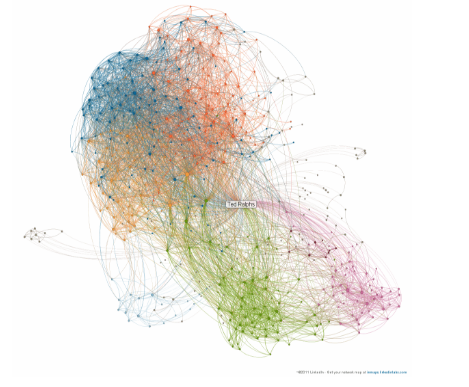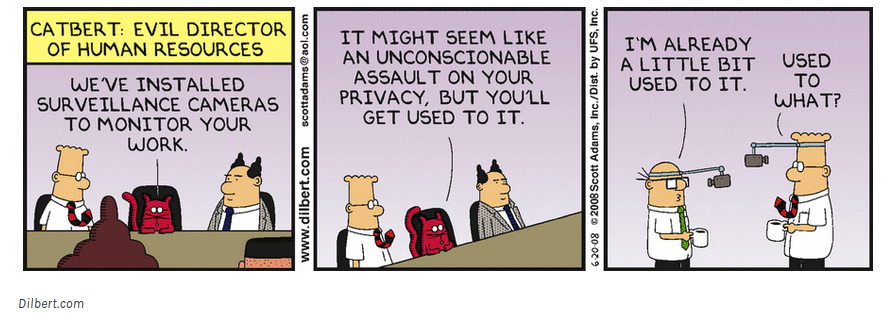Mapping the Organic Organization
Thoughts on the development of a Network Graph for your company
Creating the perfect organization for a business is hard. It has to maintain alignment of goals and vision, enable the movement of innovation and ideas, develop the products and services and deliver them, apply the processes and controls needed to remain disciplined, safe and sustainable, and many things besides. But getting it right means a significant competitive advantage.
There are myriad organization designs but even with all the efforts and thought in the word, the brutal truth is that the perfect organizational structure of your company today will be imperfect tomorrow. But what if we could track how our organization was developing and evolving over time? Would that be useful in identifying the most effective organization structure, i.e. the one that, informally, is in place already? Furthermore, could tracing the evolution of that organization predict the structure of the future?
Monitoring the way information flows in a company can be tricky as it takes many formats through many systems, but communication flows are becoming easier to map. Large social media platforms such as Facebook or LinkedIn have developed functions to visualize your social network or business contact network. Twitter maps of key influencers and their networks also make interesting viewing. And increasingly, corporations are developing such tools to understand their inner workings.
A corporation’s ‘social network’ can be visualised using the metadata captured from communication between colleagues – email, IM, VOIP call, meetings – and maps them on a network graph. Each individual engaged in work with the company constitutes a node, and the edges, communications (the weight of the edges relating to the frequency of communications).
The insights could be fascinating and important. The communities within the graph can be identified – perhaps these line up with an organization chart, but more likely, not. It would identify key influencers or knowledge centers that may not easily be recognised outside a specific work group, aiding with risk management and key succession planning with many nodes connecting to that person. It could identify the ‘alpha index’, the degree of connectivity within a department providing some understanding of how controlled or independent workgroups are. Perhaps key influencers, those who have a wide and disparate connection profile, could help in driving cultural changes or adoption of new concepts and values.
You could even match the profiles of the people in the team with Belbin’s team roles to see how balanced it is! But maybe that’s getting a little carried away
And I think that’s the risk. What is being collected and what are you using it for?
Data is collected on communications within a corporation. Many companies have Computer User Guidelines that are reviewed and agreed to upon joining a company. The use of computers and the networks owned by an employer comes with some responsibilities and an agreement about this corporate assets’ intended use – and how the company will use the metadata generated. Clearly it is a matter of importance for the protection of company technology and IP to understand when large files are transferred to third parties. And when illicit websites are being accessed from within a company network. But how far can employers go when using this data for other insights into their employees behaviour?
Before embarking on this data processing activity, a company should develop an understanding of its employees expectation of privacy. There is a clear contrast here between an evil, all-seeing big-brother style corporation spying on staff, and employees that are compensated and paid to fulfill specific job functions for that company and who must accept a level of oversight. An upfront and transparent engagement will keep the employee population from being concerned and reduce distrust.
Guidelines for the collection, processing and dissemination of this data can be developed in conjunction with employee representatives using the multi-dimensional analytic developed by Deirdre Mulligan, Colin Koopman and Nick Doty which systematically considers privacy in five dimensions.
- The theory dimension helps in identifying the object of the data, specifying the justification for collecting it, and the archetypal threats involved.
- The protection dimension helps to develop the boundaries of data collection that the employee population are comfortable with and that the company desire. It will also help the company to understand the value of the data it is generating and understand the risks to its function should information about critical personal be made available outside, for example, to competitors or head hunters.
- The dimension of harm can help understand the concerns employees have in the use of the collected data, and a company should be open about what the expected uses are and what they are not – results would not be used as input for any employee assessments, for example.
- An agreement of what ‘independent’ entities to oversee the guidelines are carried out can make up the provision dimension.
- And, finally, the provision of scope documents concerns about limits to the data managed and access to it. This should include storage length for example. An employee engaging in business on behalf of a company should have limited recourse to be concerned that the company monitors email, but specifications of “reasonable use” of company email for personal business – corresponding with your bank for example – muddies the waters. It will be key, for example, to agree that the content of communications would not be monitored.
In order to maintain motivation, trust and empowerment, it is key to be open about such things. There is an argument that providing this openness may impact the way the organization communicates: Perhaps people become more thoughtful or strategic in communications; perhaps verbal communications start to occur electronically or vice versa as people become conscious of the intrusion. Much like arguments on informed consent, however, I believe the suspicion and demotivation generated if employees’ privacy is dismissed will far outweigh the benefits gained from organizational graphing.
Works Cited
Mulligan, D; Koopman, C; Doty, N. “Privacy is an essentially contested concept: a multi-dimensional analytic for mapping privacy”, 2016
Rothstein, M.A; Shoben, A.B; “Does consent bias research?”, 2013
Ducruet, C. , Rodrigue, J. “Graph Theory: Measures and Indices”, Retrieved September 29, 2018 from https://transportgeography.org/?page_id=5981
Nodus Labs, “Learning to Read and Interpret Network Graph Data Visualizations”, Retrieved September 29, 2018 from https://noduslabs.com/cases/learn-read-interpret-network-graphs-data-visualization/



